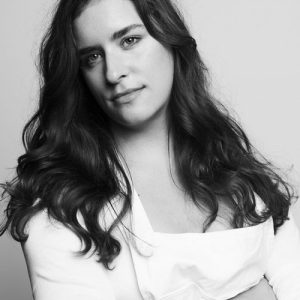Imagine not only holding a tiny ecosystem in your hand, but then eating it, in just a bite or two. That’s the concept behind Edible Growth, a 3D printed “mini vegetable garden” created by Eindhoven-based designer Chloé Rutzerveld. Rutzerveld designed the idea back in 2014, and since then, Edible Growth has grown in popularity, having been displayed in North America, Asia and Europe. Currently, the design is being showcased in Brazil’s Museum of Tomorrow, and is also featured in Rutzerveld’s new book, which was published last week.
Edible Growth consists of a spherical 3D printed crust with several holes in it. Inside is “edible soil” filled with yeast, seeds and spores that, within days, grow into plants and mushrooms that poke through the holes in the crust, becoming a bite-sized garden that is both adorable and nutritious.
One issue with 3D printing things like fruit and vegetables is that processing them into printable paste causes a significant loss of nutrients. By growing plants inside a 3D printed case, Rutzerveld allows them to keep their original form and all of their nutritional value, while employing 3D printing to create something new and exciting. Four years after introducing the concept for the first time, Rutzerveld reflected upon the fame of Edible Growth.
“Edible Growth was my graduation project at the TU/e in 2014,” she told the Dutch Institute of Food and Design. “It is a critical project about the use of additive manufacturing techniques which proposes to use the technology as a means to enhance natural growth instead of using the printer merely as a form-machine to create crazy shapes of chocolate, sugar and pasta. I think it went viral because it was the right time to show a skeptical and different view on 3D food printing. Also the picture of my roommate eating the prototype and a very realistic stop motion of how it grows, made people think that Edible Growth was not a prototype / future food concept but that we could already print edible ecosystems.
“Now, 4 years after the launch of the project the TEDx presentation (Calgary 2015) has over 52.000 views and at least once every two weeks I get an email concerning a question, invitation or proposal related to Edible Growth. Crazy! When I just started my studio in 2014 I didn’t want to be known as the 3D food printing girl – I thought it was very limiting but it also created a lot of pressure to come up with something new, which was as good or even better. But after a while I embraced it, because who cares how people find you. It matters that they find me somehow and are interested in the way of thinking to start something new, together.”
 Edible Growth shows not only how food can be creatively 3D printed, but how it can be eaten while still growing, and how food can be grown inside the home to lessen the demand for huge agricultural tracts of land.
Edible Growth shows not only how food can be creatively 3D printed, but how it can be eaten while still growing, and how food can be grown inside the home to lessen the demand for huge agricultural tracts of land.
Rutzerveld’s other works include a plant-based stroopwafel and an experimental meat cookbook. She may not have wanted to be known as the “3D food printing girl,” but Edible Growth has opened up plenty of doors for her to explore the way food is prepared, eaten, and considered. Her book, Food Futures, will be available worldwide beginning in early 2019.
Discuss this and other 3D printing topics at 3DPrintBoard.com or share your thoughts below.



22 Replies to “Chloe Rutzerveld Reflects on Four Years of Mini 3D Printed Vegetable Garden Edible Growth”
Comments are closed.